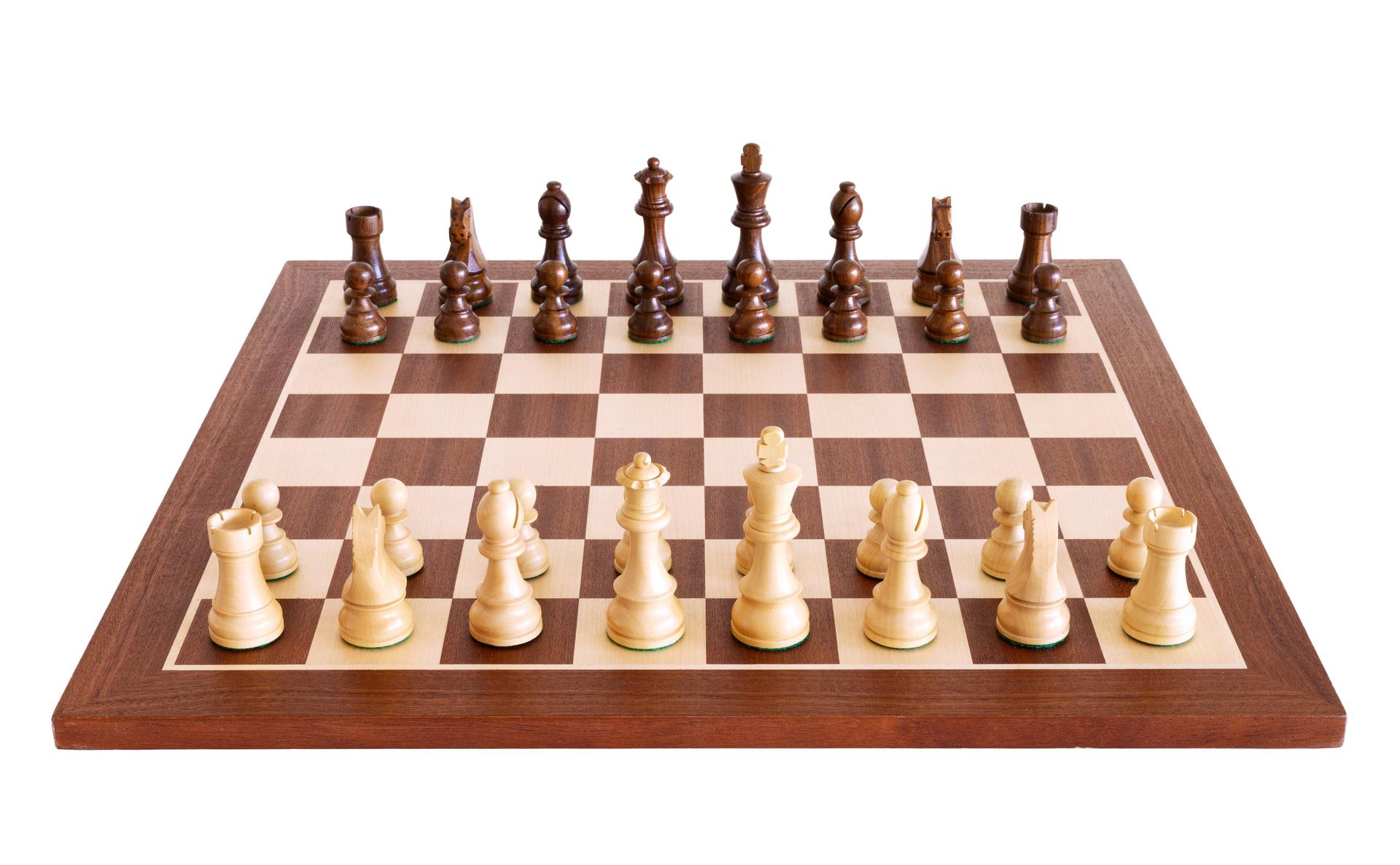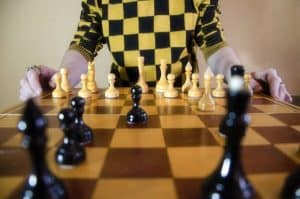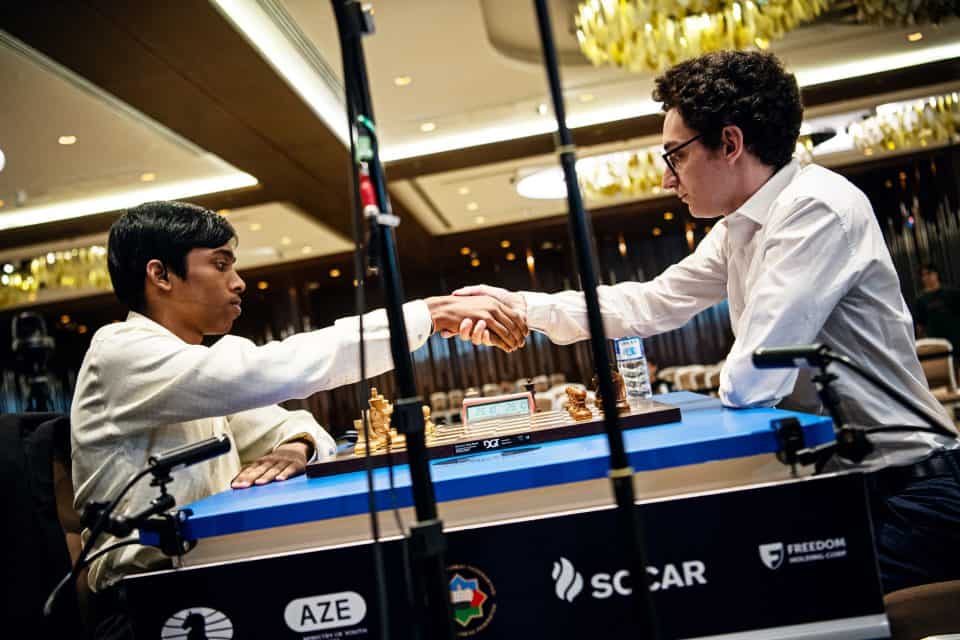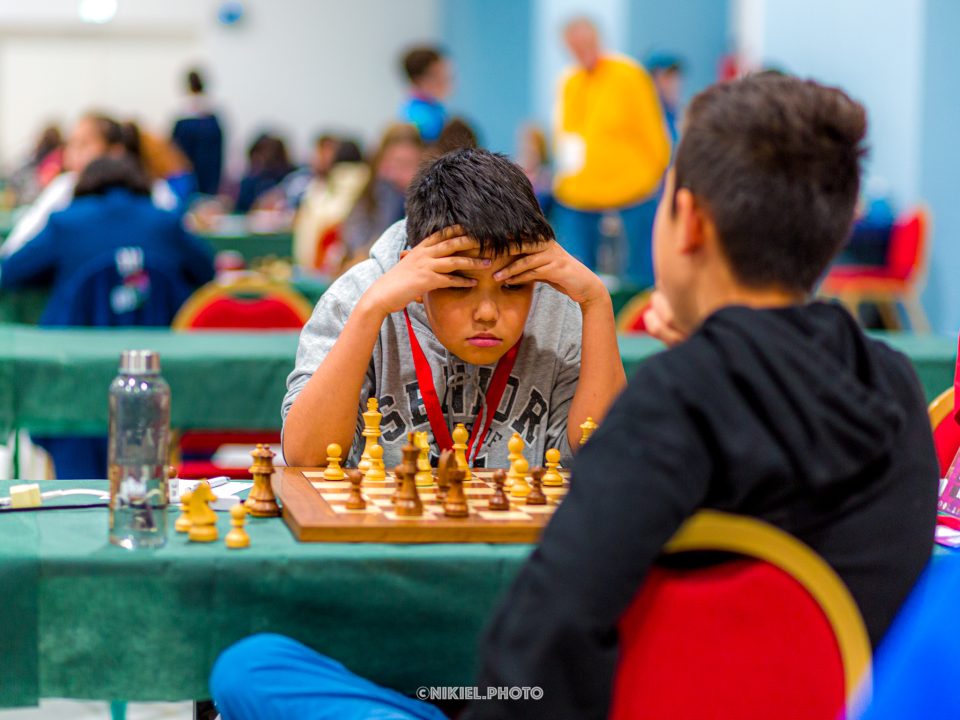Chess is a two-player game that involves moving 32 pieces on a board with 64 checkered squares.
It’s a game of strategy and tactics, where each player tries to outsmart and capture the other’s king.
Chess is like a miniature war, where you have to plan, attack, and defend.

The origin of this game is a fascinating topic that has been debated by historians and scholars for centuries.
While some evidence traces the game history to 2000 – 3000 B.C. where archaeological remains of chess-like pieces on a board were found in the city of Lothal (of the Indus Valley civilization),
Some other evidence can be found in ancient India where a game called chaturanga was played on a board with 64 squares. Chaturanga means “four divisions” in Sanskrit, referring to the four types of pieces: infantry, cavalry, elephants, and chariots.
Since then, the game has gone through centuries of evolution and transformation, changing its rules, pieces, and board design along the way. The game reached its modern form in the early 19th century, when the rules of movement, and special moves such as castling and en passant were standardized.
If you’re looking to get started with chess, the first thing to learn is the movement of the chess pieces.
Understanding the Chessboard, Pieces and Movements
The chess board consists of 64 squares that alternate between light and dark colors.
The horizontal lines that run from the bottom to the top are called ranks and are numbered from 1 to 8.
The vertical lines that run from left to right are called files and are labeled from a to h.

Each square has a unique name based on its rank and file, such as e4, which is a central square (highlighted in green circle in image above).
This notation system allows players to record their moves and positions for future reference, or even play chess without a physical board by using their imagination and calculation skills.
Now to the chess pieces, each player in chess has 16 pieces of either white or black color. These pieces have different names, shapes, and movements.

Pawns are the smallest and most numerous pieces in chess. They are often used to control the centre of the board and create the structure of the game.
Pawns can only move forward, either one or two squares on their first move, and then one square at a time. They can only capture enemy pieces diagonally, and they cannot move backwards.
If a pawn reaches the last rank of the board, it can be promoted to any other piece except a king. Learn more about pawns here.
Bishops move along the diagonal lines of the board. They can move as far as they want, as long as there are no pieces blocking their way.
Each player has two bishops, one on the light squares and one on the dark squares. They can only move and capture on their own color of squares. Learn more about the bishops here.
Rooks move along the horizontal and vertical lines of the board. They can also move as far as they want, as long as there are no pieces blocking their way.
Rooks are powerful pieces that can control many squares and support each other. Learn more about the rooks here.
Knights move in an L-shape, two squares in one direction and then one square in a perpendicular direction.
They are the only pieces that can jump over other pieces, which makes them tricky and unpredictable. Learn more about the knights here.
The queen is the most powerful piece in chess, as it can move like a rook and a bishop combined. It can move horizontally, vertically, or diagonally, and capture any enemy piece on its way.
The queen is very valuable and versatile, but it also needs to be protected from attacks. Learn more about the queen here.
The king is the most important piece in chess, as the goal of the game is to checkmate the enemy king. The king can move one square in any direction, but it cannot move into a square that is attacked by an enemy piece.
The king also has a special move called castling, which allows it to switch places with a rook and improve its safety. Learn more about the king here.
Each of the above mentioned piece has a relative value, which indicates how strong and useful it is. The values are not fixed, but they can help players decide which pieces to exchange or sacrifice.
The approximate values are:
- Pawns – 1 point
- Knights – 3 points
- Bishops – 3 points
- Rooks – 5 points
- Queen – 9 points
- King – Infinite points (since it cannot be captured, only checkmated)
Getting Chess Equipment
After learning how the chess pieces move and every other needed basic information, you should consider purchasing an actual chess board if you’re intentional about learning and mastering the game.
You can find different kinds of chess boards in the market, but you don’t have to spend a lot of money on them. A small and cheap board will do the job, especially if it’s magnetic, so you don’t lose the pieces.
We’ve already helped you review the best chess sets under $100 that you can get your hands on.
But what if you don’t have anyone to play chess with? Don’t worry, you can still enjoy chess online.
There are many websites and apps where you can play chess with people from all over the world, or with a computer.
One of the best ones is Lichess.org, which is free and has a lot of features. You can play, train, study, watch, chat, and more. All you need is to create an account and start playing.
If you’re looking to quickly get into the fun part of chess, you should also look at getting a chess clock. A chess clock is a device that measures the time that each player takes to make their moves.
You can set a limit for the whole game, or for each move, and if you run out of time, you lose. A chess clock can add some pressure and challenge to the game, but it can also be expensive.
However, you don’t have to buy a physical chess clock, you can just use your smartphone. There are many chess clock apps that you can download for free, or you can use the offline clock feature of Lichess, which is very handy.
Mastering The Game
Once you have your chess board by your side, this is where the real work begins.
You have to be ready to work really really hard to improve your skills if you want to become a serious chess player.
Of course, you can always play chess for fun with your friends and family, and enjoy the game without any pressure.
But if you have a competitive spirit and a passion for chess, you might want to challenge yourself and participate in tournaments.
To do that, you have to constantly learn and practice different aspects of chess, such as tactics, strategy, openings for white and black, endgames, and more.
You have to study the games of the great chess masters like Alexander Alekhine, analyze your own games, and solve puzzles. You also have to play a lot of games, both online and over the board, and test your skills against different opponents.
It’s a lot, truth be told.
But as the saying goes, “Little drops of water make the mighty ocean”, you’ll eventually master chess if you stick to it and make significant progress from time to time.






join the conversation